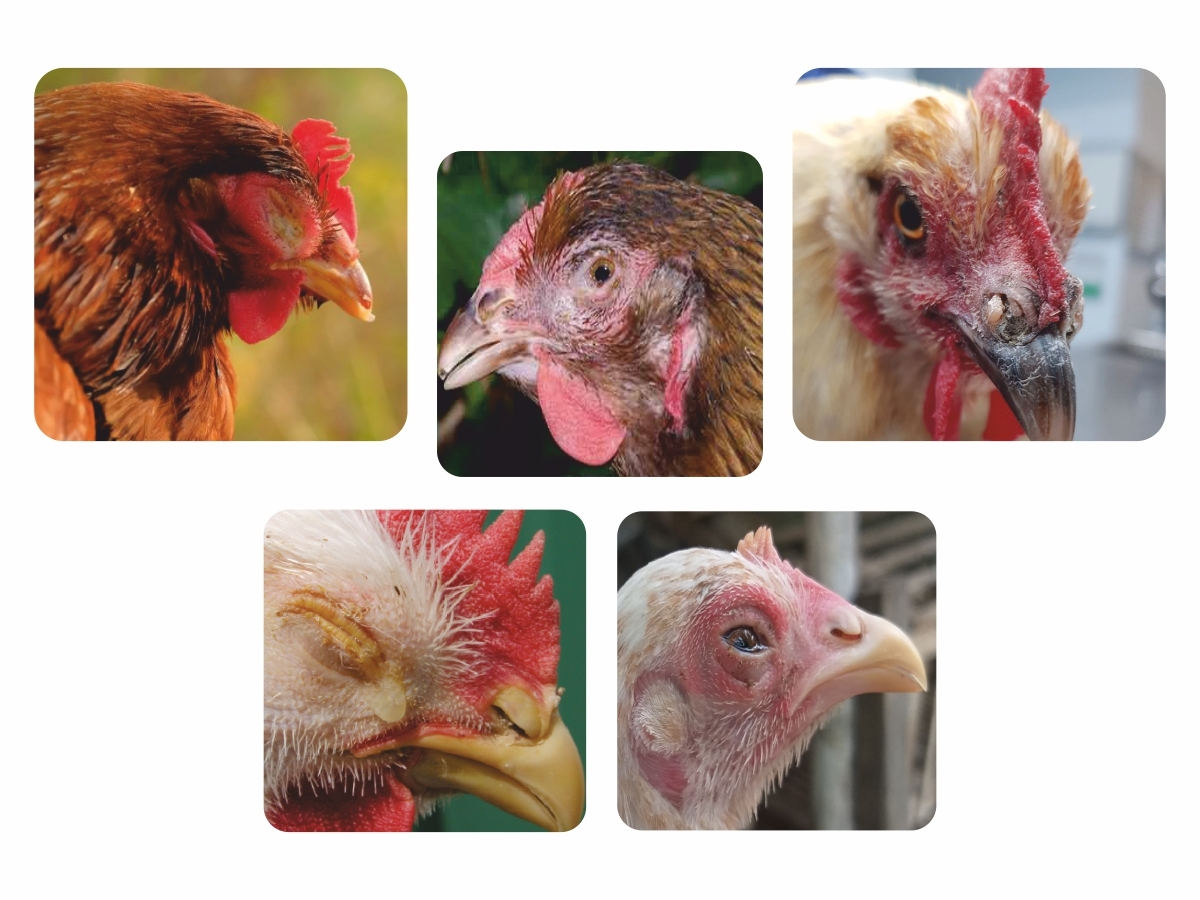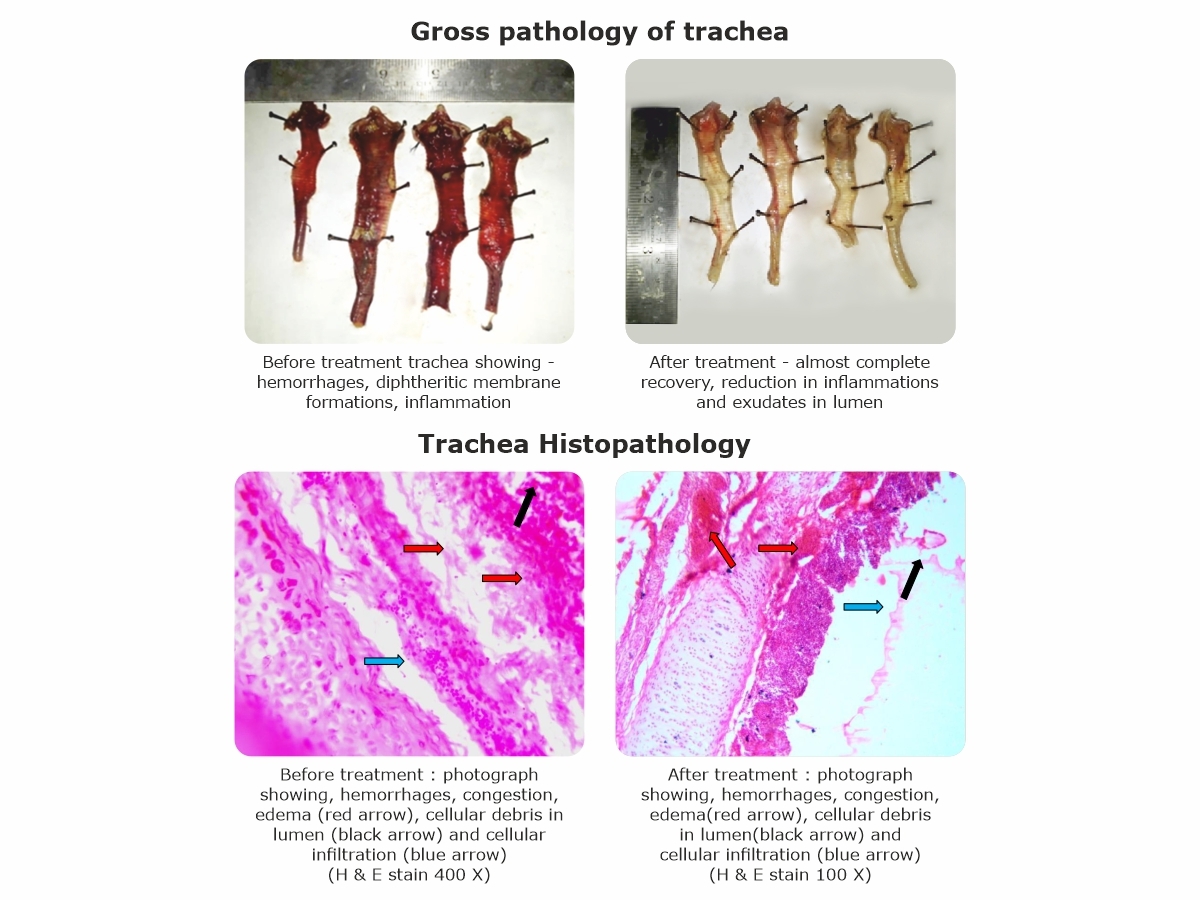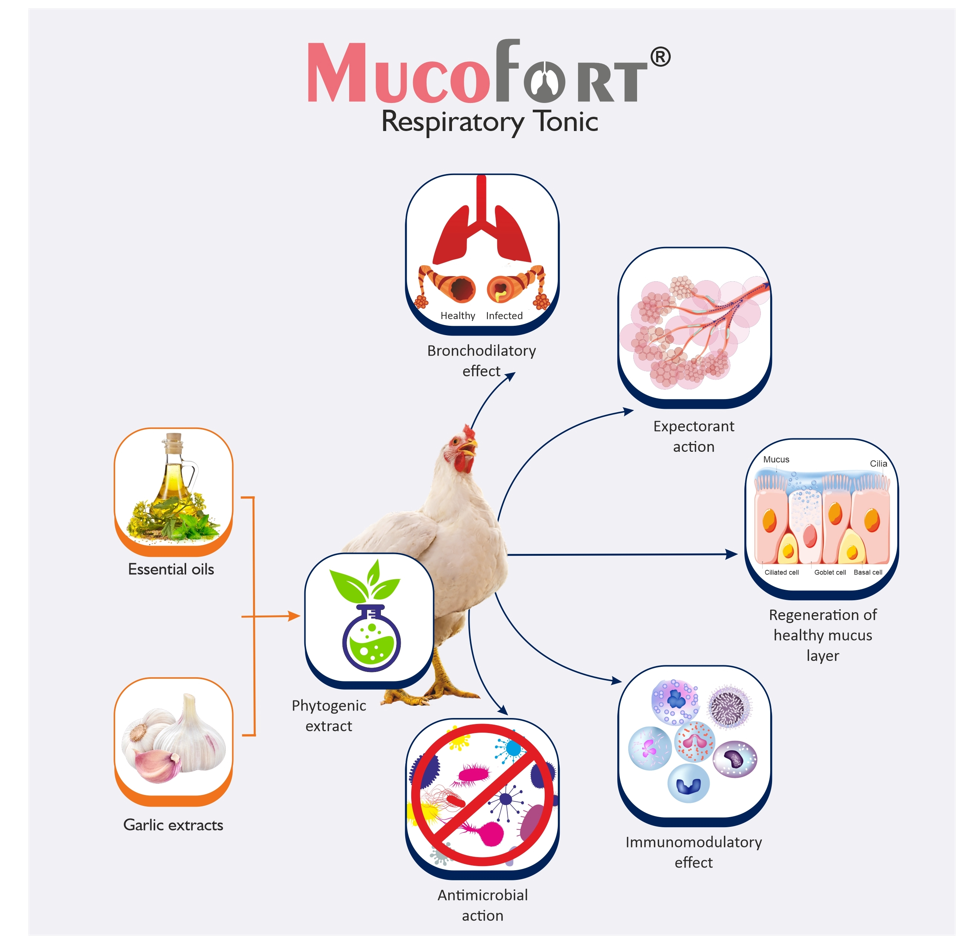



Risk factors associated with respiratory system in poultry and its management
Respiratory diseases have long been subject of extensive research due to its economic significance. Infection with these pathogens causes severe economic loss due to mortality, carcass condemnation, and reduction in the egg production, hatchability, feed efficiency and weight gain. In order to address these problems a variety of strategies has been used in the poultry industry including biosecurity, vaccination and antimicrobial therapy.
To enquire about MucoFort® contact Vinayak Ingredients
Common Respiratory Diseases of Poultry

- Chronic Respiratory Disease
- Aspergillosis /Brooders Pneumonia
- Newcastle Disease
- Infectious Bronchitis
- Avian Diphtheria
- Infectious Coryza
- Avian Influenza
- Infectious Laryngotracheitis Virus
- Chlamydiosis
- Chicken Pox
In poultry sheds, bird density, dust and heat permanently expose birds to various forms of respiratory issues. Poultry birds are endowed with effective mechanisms to expel irritants, microorganisms and spores, but these defenses are fragile. In a very dusty environment, 1m3 of air can contain more than 10 million microorganisms!
How Does Poultry Defense System Work Against Poor Quality or Contaminated Air?

Trachea and bronchi walls are covered with cilia. By contracting, these cilia cause the mucus and all the particles sticking inside to move towards the upper parts of the respiratory tract where they are expectorated (sneezed out) or swallowed. This is named the "mucocillary escalator".
Dust: vectors for transmission of microbial, viral and fungal agents in poultry houses. Now it sometimes happens that this system cannot effectively play its defense role, if it is saturated with too much dust, paralyzed by an excess of ammonia concentration, or destroyed by a viral infection. An excess of ammonia concentration (>10ppm) in the air will paralyze the cilia of the respiratory system.
Any such attack on the defenses of the respiratory system will affect the quality and quantity of mucus in Avians. If mucus is too watery or too abundant it can cause a blockage in the trachea. This may result in a bacterial infection or bird’s death by asphyxia.
How to Prevent Respiratory Issues and Improve Air Quality in Poultry?
We have brought all-rounder respiratory tonic MucoFort® in the market, which helps in stimulating protective mechanism and revitalizing respiratory system. The phyto-constituents derived from Eucalyptus, Mentha, Ocimum, Melaleuca, and Allium spp. have stimulating effects on the respiratory system and its decongesting properties provide instant relieve. It allows birds to breathe normally and improve O2 transport to the cells and reduces gasping.
Herbal extracts of MucoFort® influence the function of goblet cells which ultimately results in production of healthy thick layer of Mucin which protects the respiratory epithelium from attacks of pathogenic organisms alongside it makes the lumen wide for proper respiration and expulsion of inflammatory discharge like cellular debris and fibrinous exudates.
To enquire about MucoFort® contact Vinayak Ingredients

MucoFort® is a proven outcome of continuous research; its test reports have shown remarkable results on common respiratory conditions like congestion, hemorrhages, inflammatory secretions, diphtheritic membranes and edema.
Its liquid form makes it easy to use at the farms through the drinking system without any adverse effects. MucoFort® is a non-toxic, natural origin additive with no withdrawal period.
To enquire about MucoFort® contact Vinayak Ingredients










